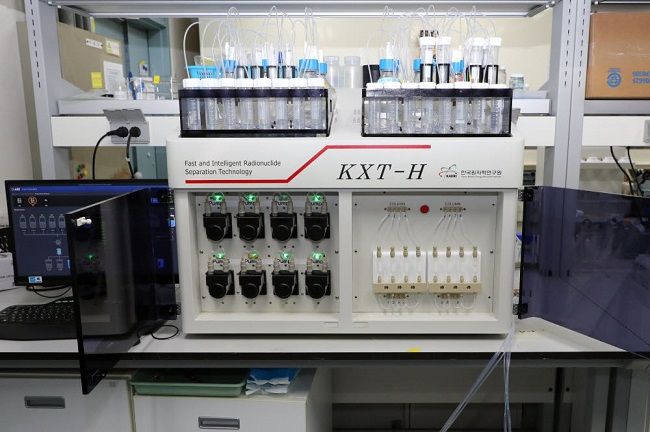Researchers Develop New Technology to Rapidly Track Radioactive Sea Water
Published on by Water Network Research, Official research team of The Water Network in Academic

An automatic nuclide separation device (image: Korea Atomic Energy Research Institute)
DAEJEON, Oct. 28 (Korea Bizwire) — A South Korean research team has developed new technology that enables the rapid tracking of radioactive contaminated water in the sea.
The new technology was developed amid growing concerns over the Japanese government’s decision to release contaminated water being stored at the Fukushima nuclear power plant into the sea.
The state-run Korea Atomic Energy Research Institute announced on Tuesday that it had developed new technology that ensures rapid analysis of radioactive strontium contained in sea water by using an automatic nuclide separation device.
Strontium-90 is one of the most common radioactive materials produced in a nuclear reactor.
The presence of radioactive contaminated water can be identified by measuring the quantity of strontium-90 in sea water.
Thus far, the precipitation method has been used to analyze the quantity of strontium-90 in sea water. This method repeats the process of adding ions to sea water to turn it into carbonic acid strontium and precipitating it several times.
This method, however, has limits since the analysis takes more than three weeks due to complicated processes.
As time passes, strontium-90 emits beta rays while being transformed into yttrium-90, with the quantity of strontium becoming the same as that of yttrium after 18 days.
Based on such properties, the research team measured the quantity of yttrium-90 using an yttrium 90-absorbing resin and an automatic nuclide separation device that was developed in-house.
With this method, the research team succeeded in indirectly measuring the quantity of strontium-90.
The new technology takes just two days to automatically separate yttrium-90, making the analysis more than 10 times faster than existing methods.
Kevin Lee (kevinlee@koreabizwire.com)
Taxonomy
- Heavy Metal Removal